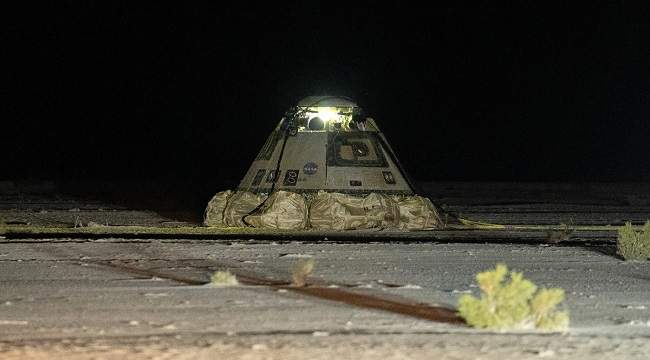Boeing’s Starliner Returns to Earth Without Astronauts After NASA Rules Out Crewed Mission
Boeing’s troubled Starliner spacecraft made a successful return to Earth on Saturday, but without the astronauts who had been on board it earlier. The spacecraft landed at the White Sands Space Harbor in New Mexico after a six-hour journey from the International Space Station, where it had been since June.
The Starliner was meant to be a crewed mission, with astronauts Butch Wilmore and Suni Williams on board. However, NASA decided to bring them back on a rival SpaceX Crew Dragon spacecraft due to technical issues with the Starliner’s thrusters and guidance system.
Despite the setback, NASA praised Boeing’s efforts during a post-flight press conference, with program manager Steve Stich saying the landing was "a bullseye" and the entry into the Earth’s atmosphere was "darn near flawless." However, Stich acknowledged that new issues had come to light, including the failure of a new thruster and the temporary loss of the guidance system.
The Starliner program has been plagued by delays and technical issues since its inception. The spacecraft was originally scheduled to launch in 2015, but has been delayed multiple times due to software glitches, helium leaks, and other problems. Despite this, Boeing has promised to address the issues and get the spacecraft ready for crewed missions.
However, the longer it takes for the Starliner to become fully operational, the less time it will have to prove its worth. The International Space Station is scheduled to be decommissioned in 2030, and NASA is likely to prioritize other space exploration initiatives over the Starliner program if it continues to experience delays.
Boeing’s reputation has also been damaged by safety concerns surrounding its commercial jets, which could impact its chances of securing future contracts for space missions. The company will need to address these concerns and demonstrate its ability to deliver reliable and safe spacecraft if it wants to stay in the running for future NASA contracts.
In the meantime, NASA will continue to analyze the data gathered from the Starliner’s uncrewed test flight and assess what changes are required to both the design of the ship and the way it is flown. The next flight of the Starliner is scheduled for August next year, but it remains to be seen whether it will be crewed or not.
